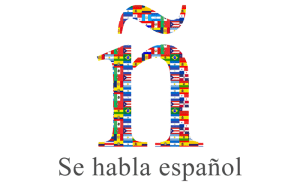What are the Legal Requirements for Captioning Spanish Video? The Federal Communications Commission, or FCC,…

Should You Use Spanish Subtitles and Closed Captions?
Spanish Subtitles and Closed Captions- What’s the Difference and Why Should I Care?
It may seem like Spanish subtitles and closed captions are the same thing, but they are very different. People often use these terms interchangeably and this can be confusing when you work with video. When it comes time to decide which to add for your video, not knowing the difference could end up costing you a lot.
But it’s Ok. Take a deep breath, grab a cup of coffee and relax. This post will help you start to sort it all out and show you why it’s important to learn all this confusing stuff in the first place.
Spanish Subtitles vs Closed Captions
Throughout most of the world subtitles and closed captions have different meanings. So to make things clear, here are the definitions of both:

Subtitles, (also called translation) are predominantly used as a way of translating a medium into another language, allowing those that speak another language to consume the content. For instance, English audiences would be unable to follow the plot of a Spanish movie, unless subtitles were used. Subtitles are best-suited for pre-recorded videos, such as movies and TV shows.
Captions, (also called closed captions) are native-language to the medium rather then a translation to another language. They are more commonly used as a service to help deaf and hard of hearing audiences. They are also more adaptable to live broadcasts, such as news programming, sporting events and television shows broadcast live.
Why You Should Care about Spanish Subtitles and Closed Captions
To start with, the FCC requires Spanish closed captions for Spanish videos in the United States. Even if you are focusing on a US market, videos are viewed internationally. If you are looking to expand your reach and grow market share, than bilingual Spanish subtitles can benefit you. Here are some important statistics:
- Only one-third of video viewers speak English.
- Mexico is among the top 10 countries with most You Tube viewers.
- 75% of Hispanics in US speak Spanish at home.
- Creating subtitles and captions in other languages increases views.
Hispanic Culture and Digital

Hispanics are early adopters of digital technology. Including Spanish titles for your Facebook videos, YouTube channel and website just makes sense.
- 72% of Hispanics are on Social Media.
- 72% have at least one mobile device.
- Hispanics have $1.2 trillion purchase power.
- More likely to buy mobile devices than non-Hispanics by over 20%.
Moving Forward
Digital isn’t the future, it’s the present.
Leveraging Spanish subtitles and closed captions turns this cultural difference into a competitive advantage and shows you understand that English is not the only language of buyers.
Now that you know the advantages of using both Spanish subtitles and closed captions, you can make the best choice for your media. But the truly savvy video guru utilizes both subtitles and closed captions for their media. By using both you will broaden your reach, and expand your audience.
Want more information on ‘all things video’? Sign up for our newsletter.



